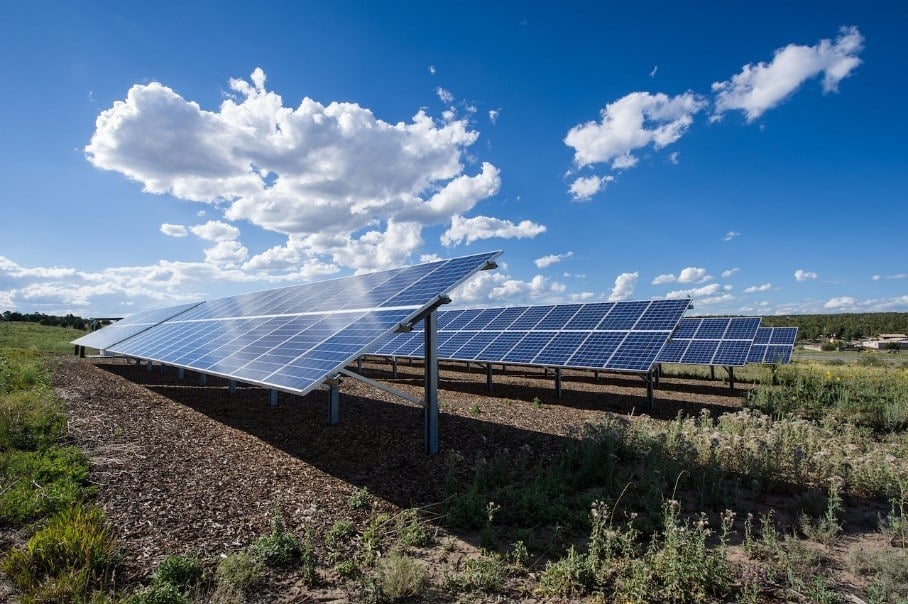Financing Sustainable Energy: New Opportunities for Public and Private Stakeholders

Entering a new market is tough, but understanding the right opportunity and supporting it with the right technology approach makes it far easier. This two-part series will explore how a credit union could evaluate the successfulness of entering the sustainable energy market.
The market for sustainable energy is growing rapidly, but as a highly regulated industry, it can be challenging for new stakeholders to know where to start. Understanding the market opportunity is essential, but market leaders will largely be defined by those who implement sustainable technology solutions that meet the industry’s unique requirements. New entrants must consider both of these aspects carefully.
Across the United States, states are incrementally enacting a range of financial incentive programs for emission-free energy creation investments. When implemented effectively, these subsidy programs that are focused on renewable sources like solar, wind, or geothermal energies can:
- Help states to encourage adoption of sustainable, emission-free energy sources
- Create new jobs and stimulate statewide economic growth
- Decrease energy costs for residents
- Decrease the variability of energy costs throughout the year

Solar Photovoltaic Panels. Source: National Renewable Energy Laboratory (NREL), Dennis Schroeder
In this blog series, I’ll be diving specifically into solar energy, with a case study from the perspective of a credit union analyzing whether to enter this market as a lender. Then, after outlining a few of the myriad external factors that factor into a solar energy project’s investment potential, I’ll show how a lender can account for these factors using third party APIs and code-free business rules.
The Solar Market Today
The most commonly known process to generate electricity—using solar panels—is called Solar Photovoltaics (Solar PV). According to the most recent U.S. Solar Market Insight Report, published by the Solar Energy Industries Association, the total installed U.S. PV capacity will more than double over the next five years. This is partly due to advances in energy storage technologies, which will address a key limitation associated with solar electricity—varying demand levels throughout the day, time of the season, and how sunny it is outside.
Having surpassed the technological hurdle of storage, the next challenge is to increase investment in and adoption of solar energy technologies. This makes now a prudent time for community and regional financial institutions (CRFIs) such as credit unions to explore renewable energy project funding as a lending product.
A recent report published by the National Renewable Energy Laboratory (NREL), a part of the US Department of Energy’s Office of Energy Efficiency & Renewable Energy, presented a breakdown of the opportunity for CRFIs:
- Knowledge of Local Markets: “Because of their size, geographic variation, and local market knowledge, CRFIs are well suited to develop innovative or tailored PV financing products. Relatively few banking institutions currently offer PV loan products, and existing product specifications might not be desirable in every market. However, new PV loan products could be developed for many of the communities served by CRFIs, and the willingness of many CRFIs to collaborate and share could enable rapid dissemination and evolution of the new products.”
- Decreasing Cost Barrier: “Many CRFI loan types could be adapted for financing PV systems… Because the cost of PV systems has fallen dramatically, loans made to an individual on an unsecured basis may also fund a PV project. Although unsecured loans to individuals represent a relatively small portion of CRFI loan portfolios, they still constituted over $160 billion at the end of 2017.”
- Smart investment for local businesses: “In the commercial space, a PV system is like other equipment financings and could be funded by commercial and industrial loans.”
Economic Considerations
While most CRFIs are experienced in offering a variety of lending products, developing loan products for renewable energy projects is uniquely complex. As with any new prospective revenue stream, a requisite level of consumer demand for these programs must be present, but other tougher-to-measure variables must also be considered. For example, because, this is a newer type of loan available to the market, CRFIs must use their knowledge of local markets to develop new, suitable risk profiles.
Smaller CRFIs may prefer to experiment with very specific loan types, so that they can avoid being over-concentrated in this loan type. Furthermore, volatile global trade factors must also be considered by all prospective lenders, illustrated by the Trump administration’s 30% tariff on solar panel components in 2018. Thus, as the number of solar lenders grows, the competitive battleground will increasingly be business agility, due to the diverse external factors impacting the industry.
No Two Sites are Identical, and neither is Their Data
When lenders know the best practices for optimizing PV system availability and effectiveness, they can help prospective customers to quantify the economic impacts of their investments, and market their customer successes as told through data.

Variations in PV loan types by level of security (NREL, 2018, Paul Schwabe and David Feldman)
NREL’s publication, Best Practices for Operation and Maintenance of Photovoltaic and Energy Storage Systems, presents a comprehensive set of best practices that decrease maintenance costs and improve the predictability of those costs. “Drivers to improve O&M include the following: increase efficiency and energy delivery (kWh/kW), decrease downtime (hours/year), extend system lifetime (e.g., from 25 to 40 years for PV modules), reduce cost of O&M ($/kW/year), ensure safety and reduce risk, enhance appearance, and meet requirements of financing and warranties.”
Achieving each of these requires vast amounts of system data collected, but also software tooling capable of analyzing this data at scale and documenting it in human readable, interoperable formats. The same NREL report goes on to cite how larger scale PV systems achieve this: “Software solutions can both decrease costs and improve revenue optimization, depending on the setting and organizational priorities. Software solutions can also reduce risk and uncertainty (e.g., automating compliance processes to avoid missing dates and receiving fines).”
By leveraging tooling that enables experts on the PV system to actually implement these process automations without them needing to know how to code, those managing the systems can better ensure compliance, uptime, and reporting auditability.
Appealing to Consumers’ Wallets
Public programs at the local, state, and federal level are providing favorable benefits such as tax credits to citizens and small businesses that adopt renewables. CRFIs can play a major role in educating local communities about these incentives, which will serve the dual purpose of driving new loan applications and assisting in local adoption of energy efficiency. To achieve this, it will be critical to have in-house experts on the eligibility policies of these programs, and the technological capabilities to lawfully market and underwrite compliant loan products. The closer the policy experts can be to the implementation of these technologies, the faster the time to market will be.
Nationally, the Bipartisan Budget Act of 2018 reinstated a variety of tax credits for consumer energy efficiency. Consumers must adhere to a multitude of criteria related to the date the system was placed in service, the type of energy being produced, whether they live on the property, the componentry on the property that will be using the gathered electricity, the energy efficiency certification of that componentry, and so on.
Here in my home state of Massachusetts, the Residential Energy tax credit has its own menu of criteria—whether the property owner is a dependent of another person, the proportion of the expenditure of the renewable energy project to their annual income tax, how long the property owner intends to own the property, whether they are receiving other housing payment assistance, whether the energy source expenditure facilitates the storage of that energy, and so on.
Suffice it to say that there is a plethora of regulatory criteria to stay on top of for any taxpayer hoping to take advantage of these programs, or any CRFI looking to help those taxpayers do so. Thus, as has been the case in other highly regulated industries experiencing rapid growth in a new sector, technology decisions will develop as a key competitive battleground for lenders. Market leaders will largely be defined by those who implement sustainable software development practices and user friendly, easy to change IT systems to deliver their lending products. IT systems used for the implementation of new loan products must therefore meet a range of requirements.
In part two of this blog series, you’ll see how you could use Progress Corticon to deliver on many of these requirements. Without writing a line of code, you’ll see how creating business rules as an architectural layer can help speed the time to market and make it easier to economically justify any solar lending project.

